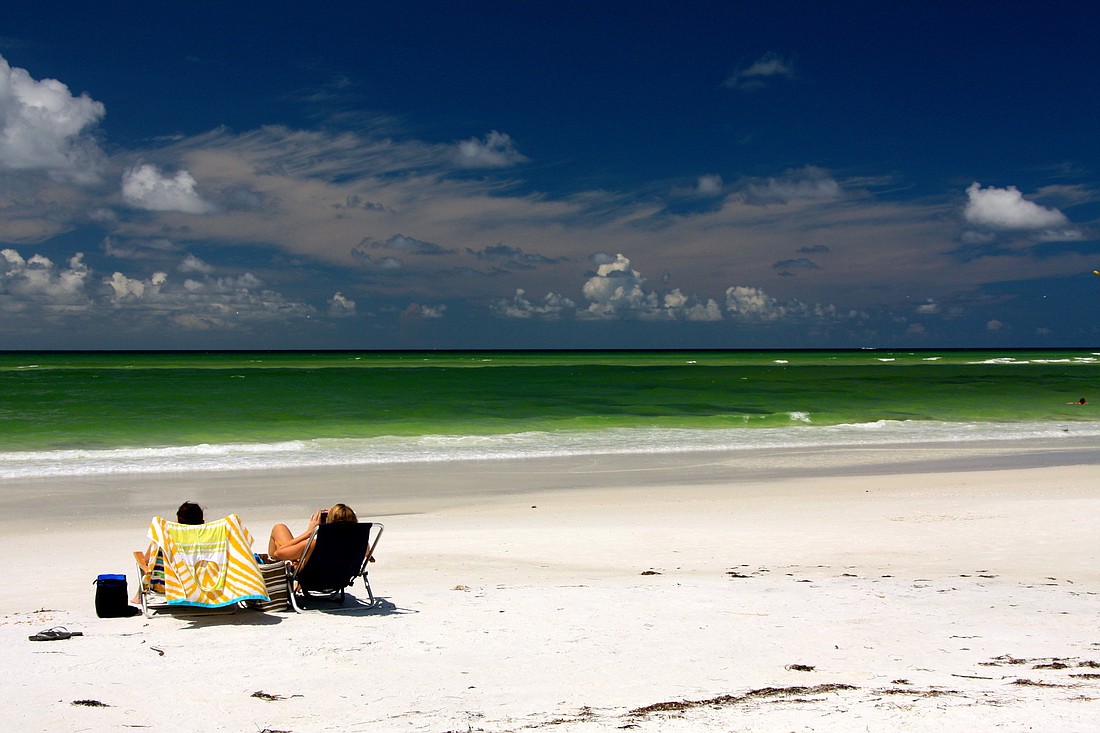- November 26, 2024
-
-
Loading

Loading

The Siesta Key Association (SKA) took a moment to look back at its 65-year history Thursday, before delving into several of today’s hot topics.
Sarasota County historian Jeff LaHurd gave a presentation on the history of Siesta Key to the SKA board and the roughly 40 residents who attended Thursday’s meeting.
“By 1954, there were only 500 permanent residents on the island,” LaHurd said. “It was still a wild, tropical island in those days.”
The SKA was founded in 1948 as a non-profit community group committed to guiding development on the Key and protecting its natural resources to preserve the island as an attractive residential area.
Many of the issues the group was originally founded to address are still at the forefront of its agenda today, SKA President Catherine Luckner explained.
“Today we’re still dealing with some of the same issues that were the reasons for our founding,” Luckner said, explaining how the group’s elemental issues of land use, zoning issues and environmental protections still top its contemporary agenda. “From the beginning, our intent was to protect what we have on Siesta Key.”
Following the historical look-back, the board returned to business at hand, addressing several of the island’s hottest debates, including the proposed Army Corps of Engineers project to mine Big Pass for Lido Beach sand and possible changes to the county ordinance banning outdoor merchandise displays on the Key.
The board is advocating for public hearings and an independent peer review of the Army's dredging plans, although SKA has not yet taken an official position on the project.
SKA Board member Peter van Roekens reported that the Army Corps was planning to apply for permits at the end of November, secure funding in 2014 and begin construction in 2015.
Central to the reservations of area groups like SKA are the three erosion control jetties, known as groins, which are included in the Corps’ plans.
The groins are intended to slow the southerly drift of sediment from Lido Beach, increasing the interval between required renourishment cycles from three years to five years, potentially saving the county and city millions of dollars over the 50-year lifespan of the project.
Van Roekens said independent researchers have not properly vetted the U.S. Army Corps of Engineers project, leaving too much margin for error in predictive models and an unacceptable degree of uncertainty on how the project could impact the health of Siesta Key beaches.
Recent disclosures that one of the project’s proposed groins is scheduled to be constructed on county-owned land at the southern end of Lido Beach has changed the dynamic of the debate, giving county commissioners an avenue to scuttle the entire project by rejecting the Corps’ request to build on the site.
This development will give the county the ability to stall a key component of the Corps' plans, which according to the Project Manager Milan Mora, would likely require shelving the entire operation.
Mora said the feasibility study used to predict the impact of the dredging project on Big Pass and the surrounding beaches depends on the inclusion of the groins, and any changes would “send everything back to the drawing board.”
“Because it’s county land, it’s really a county issue,” Luckner said. “It changes the basis on which we have the right we have to ask for public input.”
The SKA Board also addressed proposed changes to a county ordinance banning the outdoors display of goods by Siesta merchants.
There will be a meeting at St Boniface Church at 3:45 p.m. Tuesday, Nov. 12, to solicit input from Siesta businesses owners and residents about what changes should be made to the existing rules.
“We hope to have the residential community, as well as the business community both come out for this,” Luckner said. “If we want to find a solution everyone can live with, we need to get everyone’s opinion."
Contact Nolan Peterson at [email protected]